A Humanitarian Catastrophe: Dr. Wojtek Wilk on the Situation at the Sudan-South Sudan Border
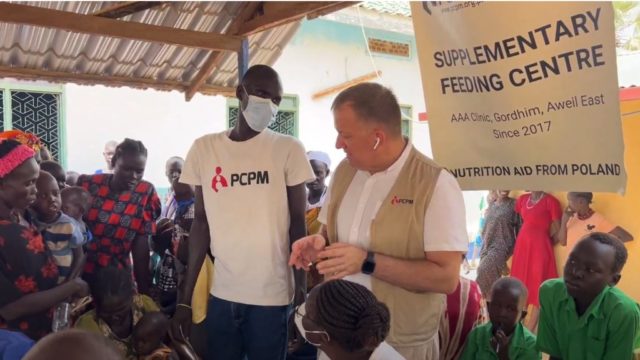
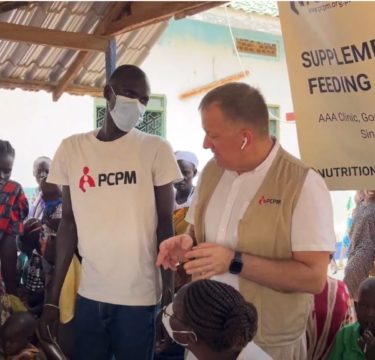
We cannot ignore conflicts like the one in Sudan, because Africa has already seen ignored civil wars that have led to absolutely catastrophic cases – says Dr. Wojtek Wilk – president of the Polish Center for International Aid Foundation, an expert on humanitarian aid.
– You have just returned from South Sudan. During the visit, you’ve visited Gordhim, among other places, where PCPM runs a Supplementary Feeding Center for children and mothers. What is the situation like on the ground now?
We knew the situation would be difficult, but to be honest, I didn’t expect it to be so bad. The main factor that has caused the situation to deteriorate in both Sudan in the north and South Sudan is the civil war that broke out again a year ago in Sudan in the north. From today’s perspective, one could say that it was obvious that this conflict would flare up again. We are talking about a clash between the army from the capital and a very powerful militia armed by the army, which is now called the Rapid Support Forces (RSF), previously known as the Janjaweed. So the same people who murdered civilians in Darfur during the war. And even earlier, civilians in southern Sudan during the war for independence of South Sudan. This militia, which originated from a deep province, eventually rebelled against its patrons. The new conflict has caused Sudan, a very large country with a population of nearly 50 million, to practically disintegrate.
There are still attempts by both sides to take control of the entire territory, but at present the country is divided roughly in half between the military and the RSF.
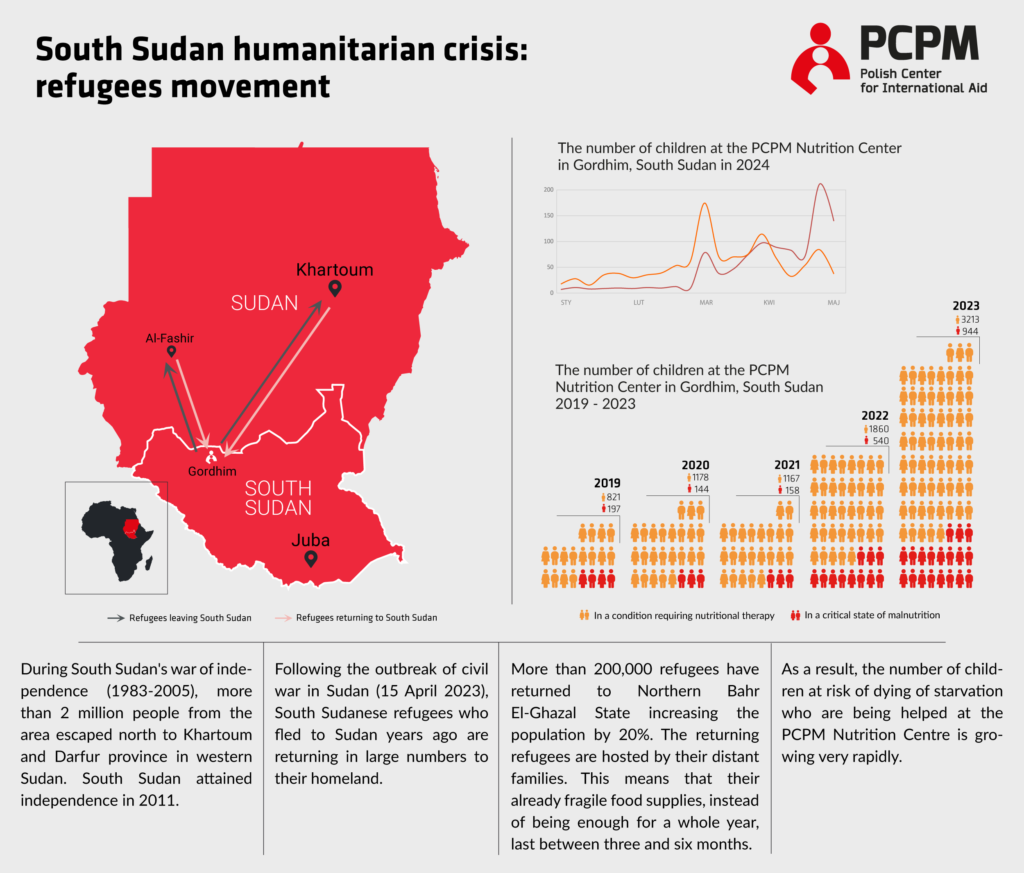
This is causing massive displacement of people, running into millions. There is talk of 8 million internally displaced people in Sudan, but the exact number is still unknown. In Sudan, practically everything has stopped working.
The economy, hospitals and schools are not working. There are constant reports of crimes against civilians on a massive scale. This is also causing a mass exodus of people from Sudan.
In fear of violence, rape and death, they are seeking safety in Sudan’s neighboring countries.
Each of Sudan’s neighboring countries has its own problems. Egypt, for example, has a closed and largely mined border with Sudan and is not very willing to accept Sudanese refugees. Chad is located in the heart of Africa, in the desert. It is a very poor country that has already taken in hundreds of thousands of refugees from Sudan. Few people want to flee there. In this part of Ethiopia, which borders Sudan, there is currently internal fighting.
Therefore, at least 600,000 refugees from Sudan have fled to South Sudan, to a place where, until recently, before 2005, there was a war of liberation from the north. Now people from the north are fleeing to the south in the hope of safety. It’s such an irony of history.
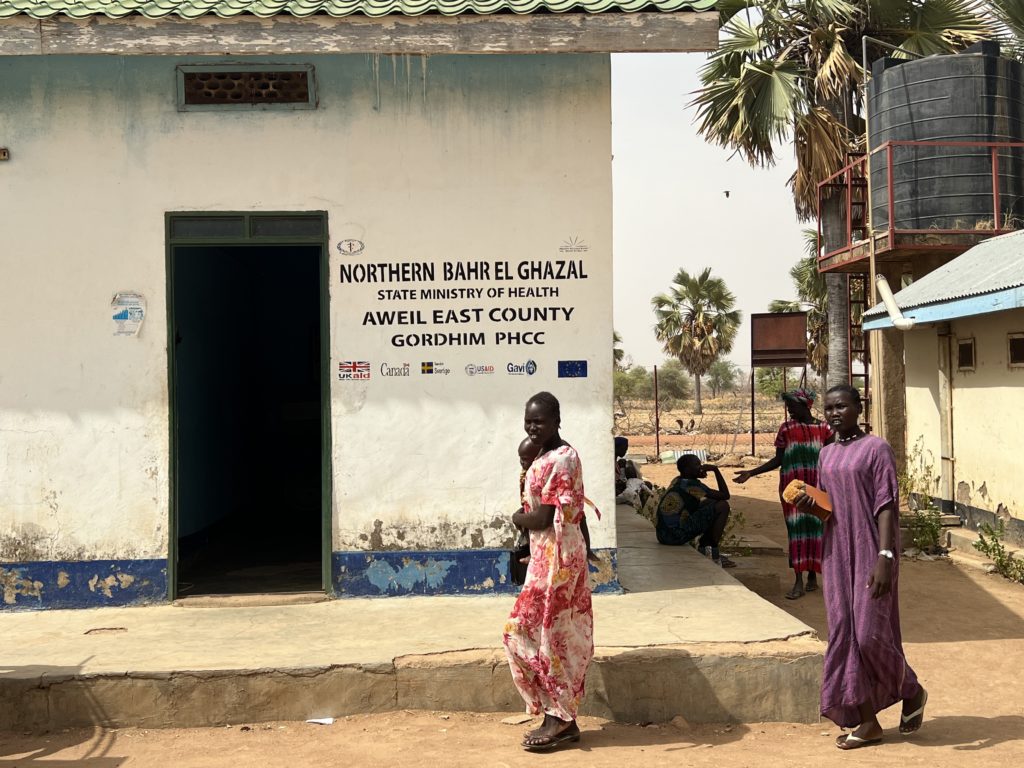
In addition to the 600,000 refugees from Sudan in South Sudan, there are also hundreds of thousands, another 600,000 it is said, who were originally residents of South Sudan, then took refuge in Sudan in the north, and are now returning again.
And it is this last aspect in particular that is driving the incredible hunger that we have found in the Northern Bahr el Ghazal region of South Sudan, where we work.
To explain, South Sudanese families who have returned from exile after 30-40 years go to their homes and are, as tradition dictates, hosted by their families. However, if a family has enough food for, let’s say, 9-10 months of the year, and two other families arrive, then for two or three families, the food runs out after 3 months. And then all three families suffer hunger for the next 9 months until the next harvest.
PCPM has been running a Supplementary Feeding Center for Children and Mothers since 2017, located in the northern part of South Sudan, right on the border with northern Sudan and the Darfur province. For all the reasons I have mentioned, we are seeing an incredible increase in the number of children who are severely malnourished.
And we are talking about severe malnutrition, which means that a child – without specialized food aid – will die.
– Looking at the statistics of people coming to the Supplementary Feeding Center in Gordhim, it used to be a few percent, a few dozen percent, and now over 50% of these children are severely malnourished, but behind these stories are the people who are there. Who came to the Center during your stay?
Actually, every story is hard because we distribute this therapeutic food once a week. On one day of the week, mothers come with their children, who are measured, weighed and those who are moderately and severely malnourished receive therapeutic food.
In fact, in previous years, there were about 20% of such malnourished children and about 10% of those severely malnourished. However, now half of the children are in a severe state of malnutrition. In addition, some of them, 10-20%, were moderately malnourished, so these are already absolutely terrifying statistics.
We are talking about two groups of people here. On the one hand, there are women from South Sudan who come with their children because they have taken in families returning from exile to South Sudan at home and food is already starting to run out in these homes, or rather it ran out many months ago.
On the other hand, we are talking about returning refugees who have walked hundreds of kilometers, made their way through the bush and arrived extremely exhausted. And not only are the mothers themselves exhausted, but the children even more so. We are talking about two, three-year-olds or younger children who are on the verge of a very serious condition.
One such case is a little girl named Akoot who is 26 months old and weighs 5.9 kg. Her mother fled the war in Sudan and was so exhausted herself that she couldn’t feed her child. The mother was immediately admitted to the hospital so that she could regain her strength. The girl, on the other hand, was so weak that she was unable to move on her own. Fortunately, after being given a bag of therapeutic food, we noticed that she was starting to eat on her own. If she hadn’t had the strength for that either, her only chance would have been tube feeding, which in those conditions means a fierce fight for life, not necessarily won. We hope that therapeutic food will be enough for Akoot to bring her out of a state of severe malnutrition.
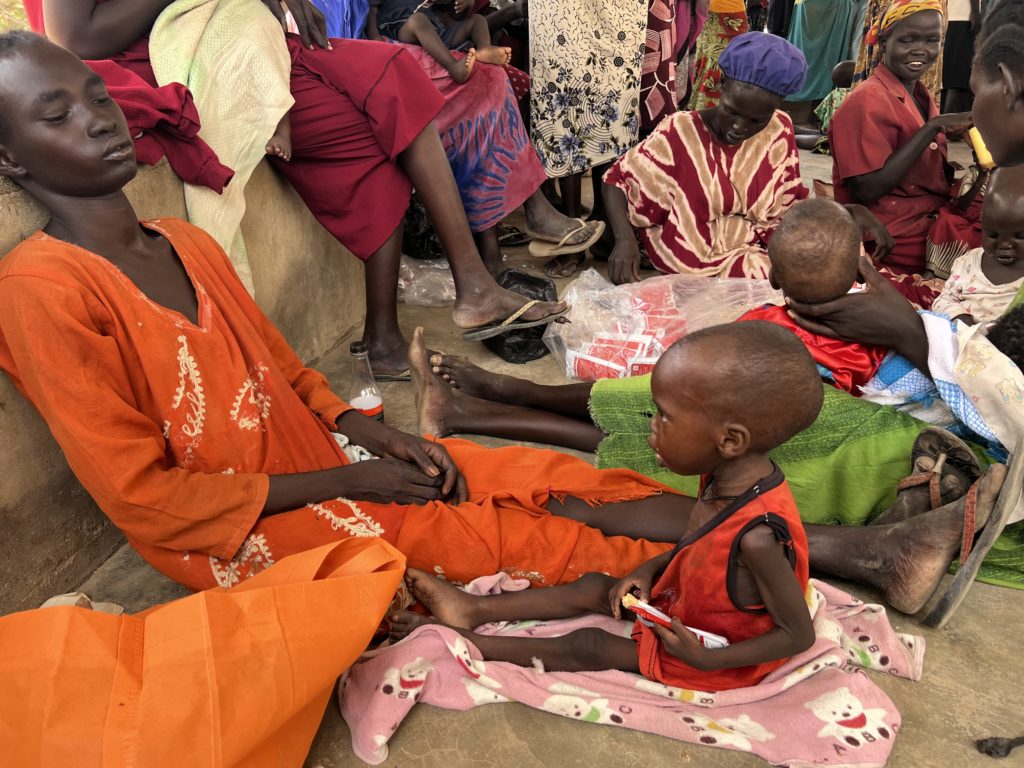
The families we see here are suffering incredible poverty and are hostages to a situation that is playing out at a much higher level than the one they live in.
Can the effects of the Center’s work be seen on the ground?
Yes, for example, a mother came with five-year-old twins, with very traditional Dinka tribal names: the older son should be named Garang and that was his name, and the younger is always Deng. They first came to the Center about a year and a half ago and were severely malnourished and threatened with starvation. And because they were patients in our Feeding Center, at the age of five they look great and above all are healthy. They even got a soccer ball from us as a souvenir, because they really wanted to have a soccer ball.
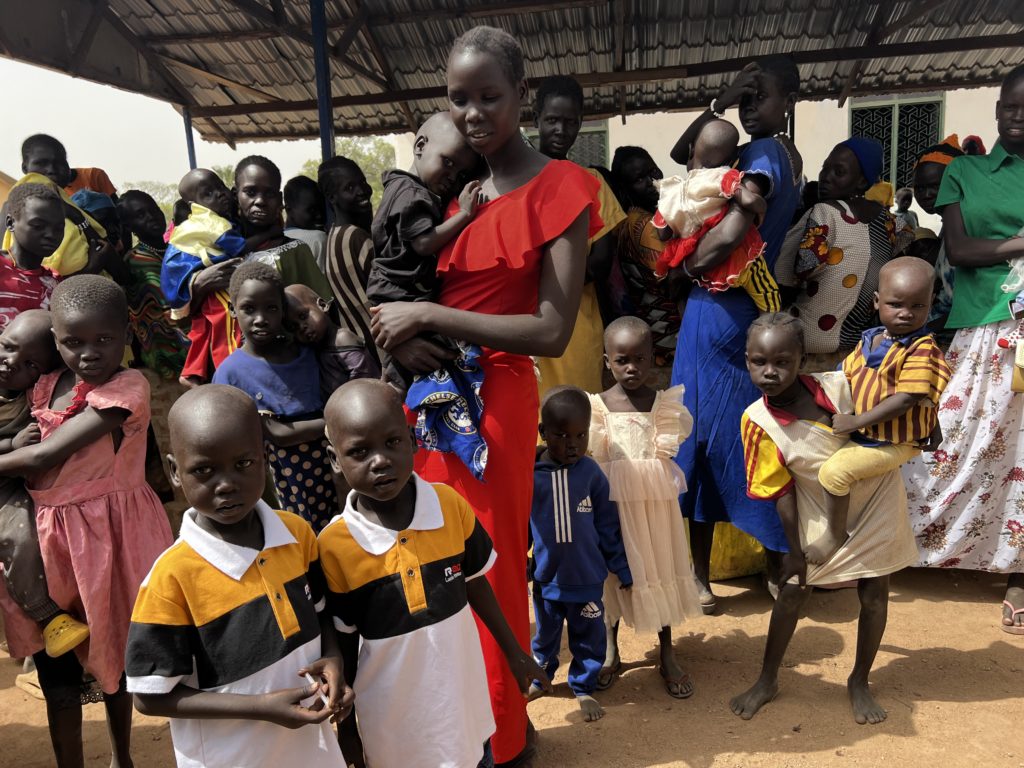
– Why do we focus primarily on the youngest in Gordhim?
In a nutshell, the human body after the age of five is able to create proteins from other nutrients, so even if a child, let’s say six or seven years old, eats very poor quality products, such as leaf paste or cooked roots, it can still develop properly.
On the other hand, if children under the age of five do not receive adequate amounts of protein, the child starts to “burn” their own muscles. This is very dangerous because the child falls into a spiral of death, which in the worst case leads to starvation. Unless the spiral is stopped by providing high-protein food that will allow the child to emerge from this state.
This is why therapeutic food is so important, because it is based on peanut butter, which is a very high source of protein that will allow the child to stop this spiral of starvation.
– South Sudan seems like a very distant country from a European perspective. However, given what is happening around South Sudan, i.e. the war in Sudan, the ongoing crisis in the Middle East, the war in Ukraine, all of this is more interconnected and influences each other. What scenarios do you see?
First, a brief analysis of the situation in a number of countries south of the Sahara. Starting from Mali, Burkina Faso and Niger through Chad, the Central African Republic, through Sudan and to a large extent South Sudan, a large area of Ethiopia, Somalia, and continuing further east – Yemen and Afghanistan, we are dealing with countries that in international terminology are called failed states. These are countries that we can see on the map, but in reality do not exist. They have fallen apart. A large part of these countries are beyond the control of central governments. Various armed groups are operating. The economy is not functioning, so even basic services for the population cannot be provided. At the same time, the population of these countries is growing very rapidly.
And now Sudan has joined this group of countries. This is a country that, I remind you, has almost 50 million inhabitants.
The situation in Sudan is one of the worst in this entire belt. While in other such countries, for example in Niger, Chad, or the Central African Republic, we are dealing with armed groups that control some areas of the country, but there is a central government, as a semblance of a state, in the case of Sudan we have a division of the country almost in half. One – controlled by the Rapid Support Forces, the other by the Sudanese army. And the Sudanese army is very weak legally. It is very possible that Sudan will become a failed state, and the longer this situation lasts, the harder it will be to pull such a country out of this state of disintegration.
Like Somalia, a country that has not recovered since the civil war of the 1990s.
The population, and above all the rulers, get used to the fact that a state of war is something that lasts and becomes a natural state. Above all, a state from which they can draw much greater material benefits than in times of peace, and it relieves them of responsibility. This is unfortunately a very dangerous situation that has been repeated in many countries around the world.
– What consequences can this have for Europe?
A few days ago I was frozen by the information that the Rapid Support Forces, supported by Russia and the United Arab Emirates, have reached an agreement with General Haftar, who controls a large part of Libya. Together they want to reopen the transit route between Sudan and Libya, and we will probably see that from Sudan and through Sudan, even war-torn, more and more thousands of migrants will start to reach the Libyan coast.
If refugees from Sudan start to reach the Libyan coast, and they will, then Europe will have no choice but to grant them asylum, because these are people genuinely fleeing war.
In such a situation, I would like to express my opinion that it is much more effective and easier to help refugees closer to their country’s border.
In South Sudan, where PCPM works, we are able to provide shelter for refugees for around $1,000-1,500 per family. For this amount, we are able to build a small house where they can live safely.
The costs of providing medical or food assistance are much lower than the costs of maintaining various types of refugees in refugee camps in Europe. However, it should also be noted that not everyone wants to flee. Some people want to be closer to their country’s border, closer to home and family.
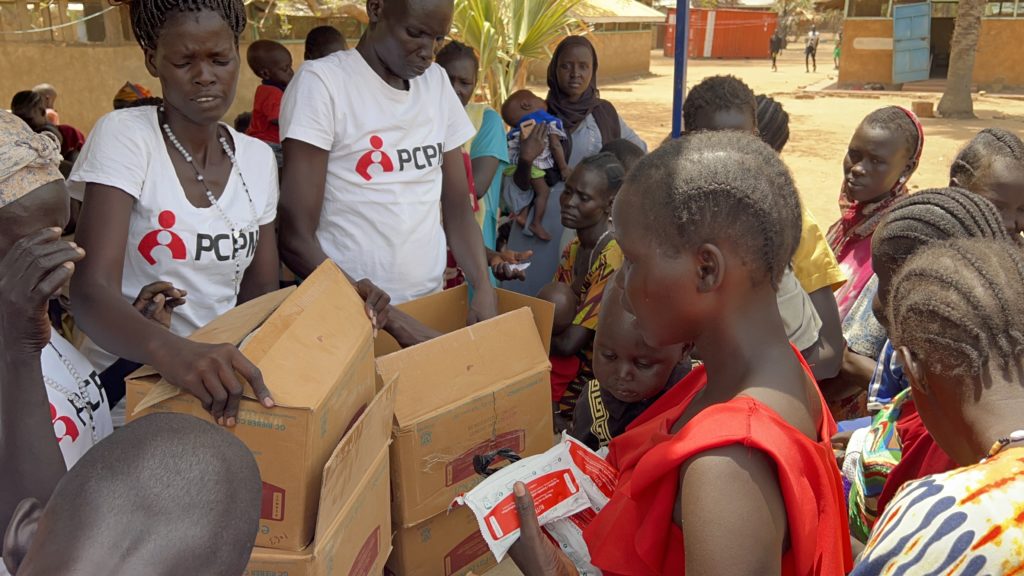
In a country like South Sudan, which is one of the poorest countries in the world, humanitarian aid from Poland is incredibly needed. And I would add that support from Poland is very much appreciated.
I would like to encourage you to take a look at PCPM’s work and support our actions.
I encourage you to visit the website pcpm.org.pl/sudan as Sudan is currently a humanitarian catastrophe.
– Why shouldn’t we forget about countries as far away as Sudan?
I know that everyone is focused on Ukraine, on the situation in Gaza, and rightly so, but the world has not seen such a huge number of people displaced from their homes and this type of crime for a long time.
And one example is that during the civil war in Sudan, around 300,000 civilians were killed, which is the same number as those killed in Gaza, so these are conflicts that are comparable in many ways.
We cannot ignore these types of conflicts like the one in Sudan, because Africa has already seen ignored civil wars that have led to absolutely catastrophic cases.
From 1978 to 2003, there was a civil war in what was then Zaire, now called the Democratic Republic of Congo. Many viewers in Europe have probably never even heard of this war.
However, the result of this five-year war was over 5 million civilian deaths. Of course, these were people who died mainly due to lack of access to healthcare or hunger. However, these types of consequences threaten to occur in the case of forgotten wars, and for now the conflict in Sudan is a forgotten war. Through our presence on the border with Sudan, we will also be able, I hope, to remind people of these challenges. Not only because they may one day pose a threat to Europe, but above all because the people there really need our help.